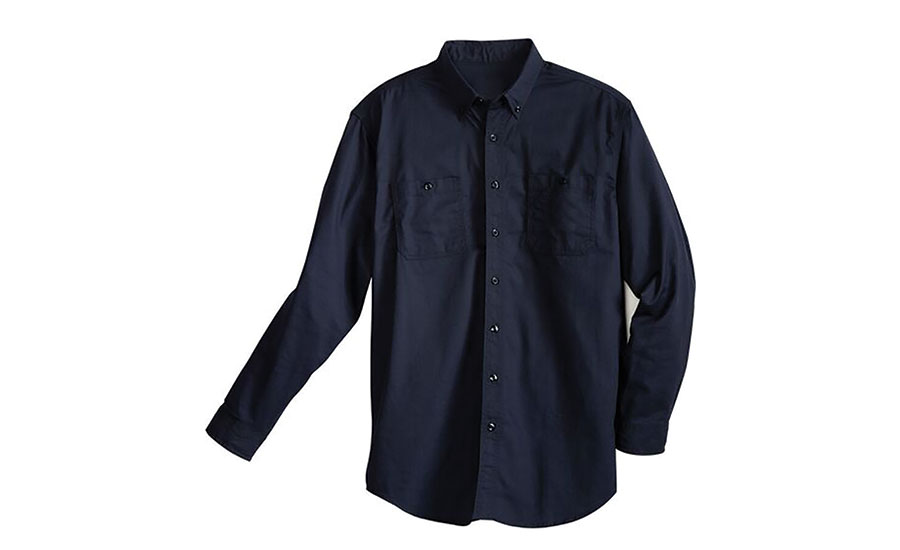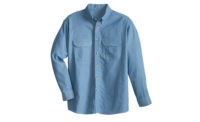Executing a wear trial may be the best way to obtain comprehensive information that will aid in your decision-making process for choosing the proper flame-resistant clothing (FRC) for your workforce.
The growing number of FRC options on the market offer a greater selection than ever before, but also complicate the evaluation process. The first step may be screening products to find those that meet all of the requirements for protection from hazards such as electric arc flash or flash fire. Finding the right FRC to satisfy your workforce requires working with fabric and garment manufacturers to find the best combination of fiber blend, fabric construction and weight for your application. Be sure to pay attention and ask questions. Look for the proof behind claims, and decide if the data is reasonable, substantial and relevant. It’s also important to understand the important role that wear trials can play in the selection process — laboratory tests and manufacturers’ claims can only take you so far.
Hard terms to define
Breathability and weight have become common terms used in the search for more comfortable protective garments, so we’ll focus on these two aspects. Lighter weight garments are often requested because lighter weight is perceived as more comfortable. But this may not always be the case. A plastic bag is a helpful analogy; a plastic bag is certainly lightweight, but probably not very comfortable to wear. So fabric weight alone is not enough to deliver comfort to the wearer.
The term “breathability” is hard to define. Common useage seems to combine air permeability, moisture management and absorbency into a single word. Unfortunately, there is no real test or value that can accurately be called breathability. Air permeability is sometimes promoted as measuring breathability, but that’s only part of the comfort equation. Think of a plastic bag with holes punched out; it may have high air permeability, but it would never be considered comfortable. Just as with fabric weight, breathability alone cannot equal comfort.
Deciding what’s best
Safety managers want comfortable FR fabrics for their workforce, but here again quantitative measurements don’t tell the whole story. Laboratory tests can produce results for specific properties, but garments experience a combination of wear factors that can’t be duplicated in the lab. The perception of comfort is likely determined by personal preference, environment, fit and aesthetics beyond any laboratory test. This is where a wear trial comes in; the best way to determine the optimal flame resistant fabric and garment is through a properly executed wear trial.
A study of FRC users by Mount Vernon FR and ASSE found just 16 percent of respondents conduct wear trials often or very frequently. With the total claimed FRC expenditure of responding companies reaching $215.8 million, this is a significant investment without data to support it. When done correctly, wear trials offer guidance in selection of the right fabric and garment by providing a more comprehensive evaluation of important factors such as performance and comfort.
You should adhere to a series of best practices to conduct a proper wear trial and gain the most accurate and comprehensive results. The following should be considered in your wear trial in order to ensure the best results.
Wear trial basics
- Keep it simple – limit the number of fabrics and/or garment styles to minimize confusion. Wear trials can be challenging to manage. Follow the guidelines and give all garments a fair evaluation. Be sure not to involve too many employees. Do consider using individuals from different shifts and areas to ensure feedback across the organization. For authenticity and to keep the results relevant, garments should be evaluated by actual occupational professionals.
- Use standard questions and ranking scales (e.g., 5-point Likert scales) to obtain measurable feedback. Just 23 percent of survey respondents claimed to use ranking scales, and 47 percent said they use standard questions.
- Ask questions that address the utility of the garment – Does the garment fit? Does it restrict motion or interfere with normal tasks? Are the features (pockets, snaps, etc.) useful?
- Allow for the evaluation of fabric and garment construction separately – Did users like the fabric but not the garment, or vice versa? According to research by Mount Vernon FR and ASSE, just 39 percent of wear trials allow separate evaluations.
- Ask for written comments to add context to the data. Almost half of respondents said they ask for this.
A properly executed wear trial helps you select the most appropriate garments for your workforce, conveying information directly from those who will be wearing them, and delivering a more comprehensive evaluation of important factors. Ultimately, this is likely to lead to a more satisfied and safer workforce.


